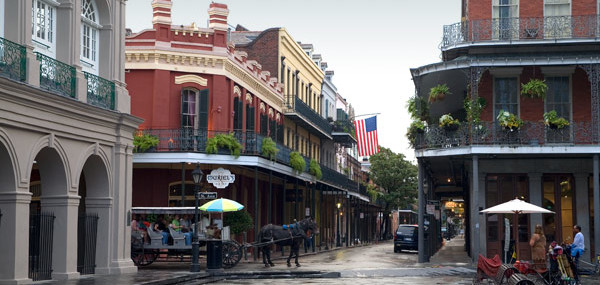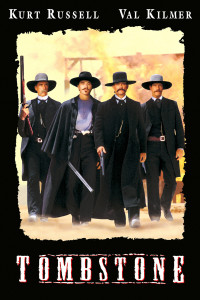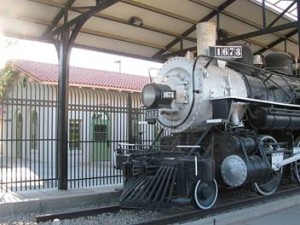Although John Henry “Doc” Holliday grew up in Georgia during the Civil War as the son of a Confederate officer, the closest he got to the action himself was seeing troops marching through his hometown of Griffin, location of two Confederate training camps. When his father returned home early from the war on a medical discharge, the family left Griffin and moved south to the little village of Valdosta, close by the Florida border and far from the advancing Yankee army. But other members of the family had a much closer view of the war, and their stories became part of his childhood memories – like the story of his Uncle Robert Kennedy Holliday (father of Cousin Mattie) who served under General Longstreet at Gettysburg, and Rob’s wife, Aunt Mary Anne Fitzgerald Holliday, who was home with the children in Jonesboro when Sherman’s Army marched south from Atlanta. With an army approaching and the road “filled with bluecoats,” Mary Anne took her children away to her uncle’s plantation for safety. The following comes from Mattie in her “Memoirs of the Holliday Family in Georgia”:Continue reading
Holliday
Stories

Fire and Ice: Doc Holliday in Philadelphia
It’s been one of the worst winters on record in the eastern United States: epic snowfalls in Boston, thunder snow in New York, fire and ice in Philly. With a temperature of 3 degrees in the City of Brotherly Love and a wind chill of 16 below, firefighters had a challenging job containing a blaze in a three-story medical building on Locust Street. By the time the fire was contained, icicles hung from the end of the fire hoses and the building the firefighters saved was covered in ice.Continue reading
Holliday
Stories

The Face Behind The Fireplace
Willis Swint was six years-old when his family moved from their hometown of Milner, Georgia to Jonesboro in Clayton County, and into an antebellum cottage across from the tracks of the Macon & Western Railroad. That was in 1933, during the Great Depression, and hobos riding the rails often stopped at the house looking for a meal and maybe some work to pay for another day of hard living. But the old house was used to strangers coming by through the years, from Yankee soldiers during the Civil War to young recruits during two World Wars. Willis liked to think about all the old house had seen, as he spent his growing up years there, finally moving out when he married and started his own home.
He was an older man himself when he moved back to the house on the railroad tracks, hoping to preserve the home and his family’s history. But it was another family’s surprising history that Willis discovered when he and his wife Beverly returned and began renovations on the 150 year-old property – the family of Western legend, Doc Holliday. In an old safe left in the house, they discovered a pile of deeds to the property reaching back to the 1860’s when the home was known as the “Holliday Office House.” The owner then was Captain Robert Kennedy Holliday, uncle of the famous Doc Holliday, and father of Doc’s rumored first love, Mattie Holliday. The home was Captain Holliday’s office, and a place that young Doc would have known and likely visited.Continue reading
Holliday
Stories

I’m Your Huckleberry
The films “Wyatt Earp” and “Tombstone” both had scripts by Oscar nominated writers. Wyatt Earp’s Lawrence Kasdan was nominated for “The Accidental Tourist,” “The Big Chill,” and “Grand Canyon.” Tombstone’s Kevin Jarre won for “Glory.” But only “Tombstone” brought us a whole new dialogue for the men of the OK Corral. Although there is enough conversation to carry the story, the script is filled with great one-liners that have become classics over the twenty years since the film was released. And Doc Holliday had some of the best lines.Continue reading
Holliday
Stories

Bringing Doc Holliday Home
John Henry Holliday wasn’t always Griffin, Georgia’s favorite son. For generations, he was the black sheep of his hometown, the good boy gone bad who was rumored about behind his back. How could a young man of such promise turn out so poorly? Surely, his parents had raised him better than to spend his life as a killer and a drunk. The Hollidays were, after all, fine Southern folk who been some of the pioneers in the area and helped to put Griffin on the map. His mother’s family, the McKeys, were large landholders with a plantation along Indian Creek and several business buildings in town. And weren’t they kin to the Elijah Cloud family who owned half of north Georgia and claimed Stone Mountain as their own private property? And although his father, Henry Holliday, came from somewhat less prosperous circumstances – wasn’t his own father a tavern keeper over in Fayetteville? – Henry had made something of himself as a landholder, too, and been clerk of the first county court in Griffin before moving to South Georgia when the Yankees came through. No, one couldn’t blame John Henry’s folks for not teaching him his responsibilities. His mother was a refined, religious woman and his father had served honorably in three wars. Yet somehow John Henry had turned out all wrong, wandering from Georgia to Texas and the frontier west to make his fame and infamy in gun battles and gambling halls. That sort of story made for entertaining novels and movies, but it didn’t suit the reputation of a Southern town like Griffin. Continue reading
Holliday
Stories

Tucson, Trainyards, and Festival Tents
Photo by Steve Nguyen / The Daily Wildcat
Tucson, Arizona, is a small city with a big blue sky and wonderful warm temperatures when the rest of the country is still shivering from a too-long winter. So we were glad to get away from chilly Atlanta in March to sunny Arizona and the Tucson Festival of Books, an annual celebration of all things literary, with author speakers and signers and over 100,000 eager readers.
Tucson is also the place where Wyatt Earp and Doc Holliday left their days as lawmen and became outlaws. They had come to Tucson honestly enough, escorting Virgil Earp and wife to the California-bound train after the murder of Morgan Earp by the cowboys in Tombstone. Virgil had been attacked a few months earlier and was still recovering from a crippling gunshot wound; now it was clear that Arizona was too dangerous for the Earps, and Virgil would need to do his recuperating elsewhere. Was it only a coincidence that Frank Stilwell, one of the suspects in Morgan’s murder, was at the train station, too, skulking around the tracks? Wyatt Earp didn’t wait to find out. According to some stories, Wyatt put a shotgun to Frank’s belly and blew him to hell. The coroner’s report on the body of Frank Stillwell, found the next morning along the railroad tracks, doesn’t support that single-shooter scenario, placing the blame on an assassination-style attack by several assailants, including Doc Holliday. According to witnesses, they had “never seen a man so shot up.”Continue reading
Holliday
Stories

Haunted by History
I had the honor this past week of speaking at the historic City Library in Provo, Utah. Of course, I love sharing my stories anywhere, but I especially love events in historic places, because I love old buildings. They carry such a sense of the history that has happened in them. You can almost feel it in the old bricks, the old stones, the old beams. I can’t help but wonder about the people who have been there but are gone now. Funny how fast the people come and go through life, and how long the buildings that housed them last.Continue reading
Holliday
Stories

Doc’s Last Cold Days
We’re having an ice storm in Atlanta. Sounds strange, here in the usually balmy American South, but not all that unusual. Ice shuts down the city every ten winters or so, starting as cold rain that freezes when it hits anything below 32 degrees: bridges, overpasses, stone stairways, iron gates and rails, roofs, tree limbs, power lines. Eventually everything is covered in ice, looking very pretty but making for dangerous driving or even walking, as the ground is a skating rink and those ice-laden trees and power lines give way under the burden and come crashing down like shattered glass. Continue reading
Holliday
Stories

Doc’s Holliday in New Orleans
The river city of New Orleans has been called one of the most haunted places in America. It certainly is full of spirits — especially the kind found on the French Quarter’s Bourbon Street, lined with bars and restaurants and other, less reputable, places of entertainment. If Doc Holliday had visited the Crescent City, Bourbon Street would surely have been one of his favorite haunts…
I was in New Orleans for a somewhat more businesslike purpose, attending the Southeast Independent Booksellers Alliance Convention, where authors and publishers present their books for the new season, and where I was showcasing “Inheritance” and “Gone West” which comes out next spring. But what I really wanted to see was the hotel where Doc Holliday likely stayed on his own visit to New Orleans.
Holliday
Stories

Doc Holliday’s Florida Getaway
Mattie Holliday, Doc’s cousin and rumored sweetheart, was quoted as saying, “He was a much different man than the one of Western legend.” He was also a lot more interesting, with travels that took him far beyond the OK Corral. But did Doc take a Florida beach break, as well? That’s the surprising direction the research goes, as historians continue to explore the unanswered questions of why – and how – Doc Holliday left Georgia. And one of the most intriguing of the answers comes from someone who knew Doc personally: Dodge City lawman Bat Masterson.
In his later years, Bat became a reporter and did a series of stories about the famous characters of the American West, including an article about Doc Holliday. The story, published in 1907 in a Boston, Massachusetts magazine, tells a tale of murder and escape set during the troubled times following the Civil War. According to Bat, there was a swimming hole on a little river near to the south Georgia village where Doc Holliday was raised, and where he one day came across some black boys swimming where he thought they shouldn’t be. He ordered them out of the water and when they refused, he took a shotgun to them, causing a massacre. His family thought it best that he leave the area, and he moved to Dallas, Texas. Although the report of a massacre isn’t likely, there are some interesting points to Bat’s story: Holliday did, in fact, live in a little village in South Georgia, the town of Valdosta, near where there is a river named the Withlacoochee, along which Doc’s family owned some land. And when Bat’s story was published and the family later asked about it by another reporter, they said that Holliday fired over the boys heads, not at them – but they did not deny the shooting.Continue reading



















